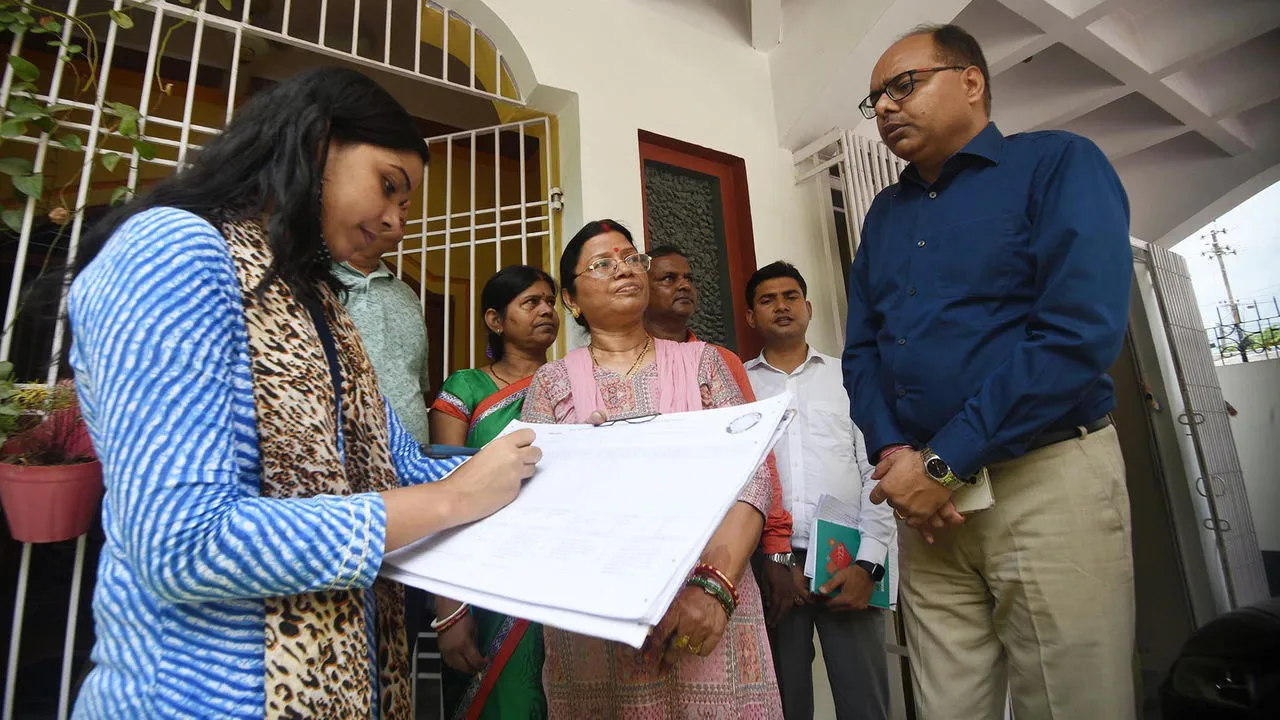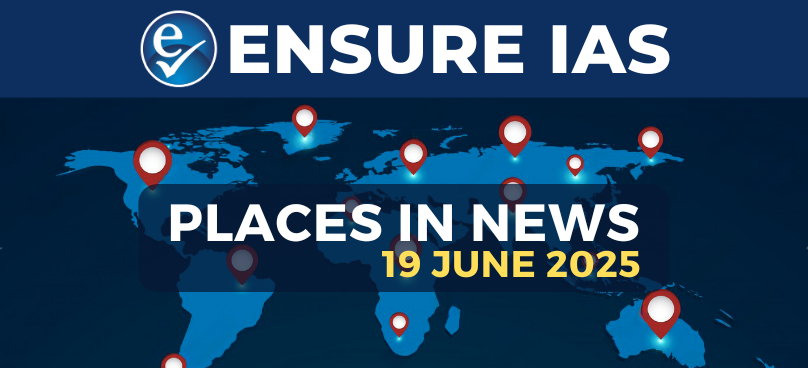- Courses
- GS Full Course 1 Year
- GS Full Course 2 Year
- GS Full Course 3 Year
- GS Full Course Till Selection
- Answer Alpha: Mains 2025 Mentorship
- MEP (Mains Enrichment Programme) Data, Facts
- Essay Target – 150+ Marks
- Online Program
- GS Recorded Course
- Polity
- Geography
- Economy
- Ancient, Medieval and Art & Culture AMAC
- Modern India, Post Independence & World History
- Environment
- Governance
- Science & Technology
- International Relations and Internal Security
- Disaster Management
- Ethics
- NCERT Current Affairs
- Indian Society and Social Issue
- NCERT- Science and Technology
- NCERT - Geography
- NCERT - Ancient History
- NCERT- World History
- NCERT Modern History
- CSAT
- 5 LAYERED ARJUNA Mentorship
- Public Administration Optional
- ABOUT US
- OUR TOPPERS
- TEST SERIES
- FREE STUDY MATERIAL
- VIDEOS
- CONTACT US
Demands for a Caste Census
Demands for a Caste Census
04-05-2025

- On April 30, 2025, the Cabinet Committee on Political Affairs (CCPA), chaired by Prime Minister Narendra Modi, gave its approval to include caste-based enumeration in the upcoming Census of India.
- This is a significant policy shift, as it will be the first time since 1931 that the Government of India officially will gather caste-wise data for communities beyond Scheduled Castes (SCs) and Scheduled Tribes (STs).
- According to the official statement, the caste census will aim to "strengthen the social and economic structure of our society while the nation continues to progress."
- This decision has come after years of political demand, social debate, and legal scrutiny, especially concerning the representation and welfare of Other Backward Classes (OBCs) in India.
What is the Census in India
- The Census of India happens once every 10 years.
- It collects demographic (population), economic, and social data about every person in the country.
- The 1st attempt at a Census was in 1872 during British rule.
- But the first proper and organized Census was in 1881, done under W.C. Plowden, who was the Census Commissioner of India.
- After independence, India continued this every 10 years under the Census Act of 1948.
- It is done by the Registrar General and Census Commissioner, who works under the Ministry of Home Affairs.
- Last census was conducted in 2011.
- However, The 2021 Census was postponed because of the COVID-19 pandemic.
- Since then, there has been pressure to resume the Census.
- Now, with the 2025 decision, the new Census will have a wider scope — it will include caste data
What is a Caste Census?
- A caste census collects detailed information on people’s caste, as well as related details like education, jobs, and economic status.
- During British rule, caste data was collected regularly.
- The last full caste census was in 1931.
- In 1941, caste data was collected but not published due to World War II.
- After independence, the Indian government chose not to collect caste data in detail.
- They said the country should move beyond caste divisions.
- So, from 1951 onwards, the Census only recorded caste details for SCs and STs. Other castes, including OBCs, were left out.
- The Census is a Union subject, under Entry 69 of the Union List in the 7th Schedule of the Constitution.
- This means only the central government can conduct a national census.
- In 1961, the Government of India allowed states to conduct their own surveys to identify OBCs for state-level use, since there were no central OBC reservations at that time.
- The Collection of Statistics Act, 2008 also allowed states and local governments to collect data when needed.
- For example, Karnataka did a caste survey in 2015, and Bihar did one in 2022.
- Even though OBCs were not included in the national census, they were officially recognized — especially after the Mandal Commission Report in 1980.
- That report used 1931 caste data and expert estimates, not new data.
- This has created a serious problem: OBCs make up a large part of India’s population, but there is no updated or accurate caste data to support reservation or welfare policies for them.
SECC 2011: An Attempt That Fell Short
- In 2011, the UPA government attempted a caste-based enumeration under the Socio-Economic and Caste Census (SECC).
- This was the 1st such data collection since Independence that attempted to include caste data beyond SCs and STs.
- However, the SECC turned out to be a deeply flawed exercise.
- Firstly, it was not conducted under the Census Act, 1948, which meant it did not have the same legal protections or methodological rigour.
- Secondly, the process was managed by the Ministries of Rural Development and Urban Development, which lacked the expertise required for such a large-scale sociological study.
- Worse, the design of the questionnaire was open-ended, and enumerators were not trained to differentiate between:
- Castes vs sub-castes
- Clan names vs surnames
- Gotras vs jatis
- Because of this confusion, the SECC recorded 46 lakh (4.6 million) unique caste names — a number that makes no sense, since the 1931 Census had recorded only 4,147 castes.
- The collected data was given to NITI Aayog and the Ministry of Social Justice.
- But it was never published because there were serious doubts about how accurate or useful it was.
Legal and Constitutional Backing for a Caste Census
- The Indian Constitution supports affirmative action (like reservations), but to apply these policies properly, the government needs accurate data.
- Here are the key constitutional rules that support reservations:
- Article 15(4) – Allows the state to make special provisions for the educational advancement of socially and educationally backward classes.
- Article 16(4) – Allows reservation in public employment for backward classes not adequately represented.
- Article 340 – Empowers the President to appoint a commission to investigate the conditions of backward classes (e.g., Mandal Commission).
- There is also legal precedent influencing reservation limits.
- The Indra Sawhney case (1992) capped total reservations at 50%, while upholding OBC reservations.
- However, it allowed internal sub-categorization within the OBCs — provided that caste-wise data was available.
- In local elections, the 73rd and 74th Amendments of the Constitution require OBC reservations in panchayats and municipalities. This is mentioned in:
- Article 243D(6) for panchayats
- Article 243T(6) for municipalities
- But in states like Uttar Pradesh, Madhya Pradesh, Gujarat, and Maharashtra, High Courts and even the Supreme Court have stopped OBC reservations in local elections.
- The reason: there is no solid caste data to support these reservations.
How States Have Stepped In: State-Level Caste Surveys
- With the Centre reluctant to conduct a caste census in the past, individual states have taken the initiative.
- Bihar (2023):
- In 2022, Bihar announced a caste survey in the State and released the results in October 2023 that revealed data on 215 caste groups.
- Based on the report, the government had raised reservation in Bihar to 65% from 50% in educational institutions and government jobs, but the hike was quashed by the Patna High Court.
- Telangana (2024):
- The Congress-led government in Telangana conducted a detailed survey covering caste, economic status, educational attainment, and political participation.
- Karnataka (2025):
- CM Siddaramaiah released the long-delayed Socio-Economic and Educational Survey (commissioned in 2015), adding momentum to the national debate.
- These state efforts pressured the Union government to reconsider its position, eventually resulting in the 2025 Cabinet approval for a nationwide caste census.
Why Is a Caste Census Important Now?
There are several urgent reasons why a caste census is being demanded today:
- Accurate data is essential to design welfare schemes for different caste groups.
- Without data, policies risk being inefficient or inequitable.
- Sub-Categorization of OBCs: There is increasing recognition that a few dominant castes benefit disproportionately from OBC reservations.
- Data can help create "quota within quota" systems to ensure justice for Extremely Backward Classes (EBCs).
- Courts have repeatedly demanded quantifiable data to justify OBC reservations.
- A caste census would help meet this requirement.
- The next delimitation of constituencies (post-2026) will rely on updated Census data.
- The Women’s Reservation Act (2023) also hinges on fresh Census data.
Challenges and Concerns
While a caste census has its benefits, it also raises valid concerns:
- Critics argue it may deepen caste identities and promote division.
- Self-reporting, inconsistent terminology, and lack of standardization can affect the credibility of data.
- The data might become a political weapon, leading to increased demand for quotas and fueling identity-based politics.
- The 50% cap on reservations may come under challenge if the new data suggests greater backwardness.
Conclusion: A Data-Driven Democracy
In a democracy like India, where social justice, equality, and representation are constitutional promises, the absence of reliable caste data is a glaring anomaly. A caste census is not just a political tool — it is a constitutional, administrative, and ethical necessity. However, its success depends on the methodology, transparency, and intent with which it is carried out.
|
Also Read |
|
| FREE NIOS Books | |




